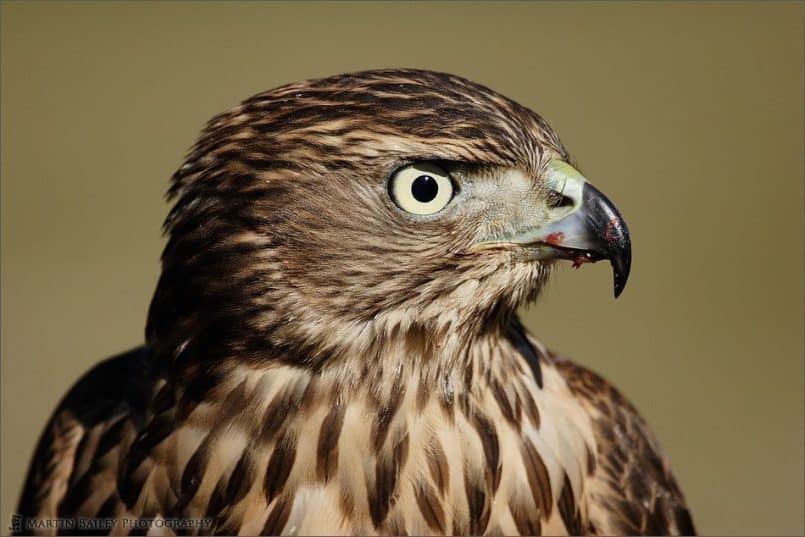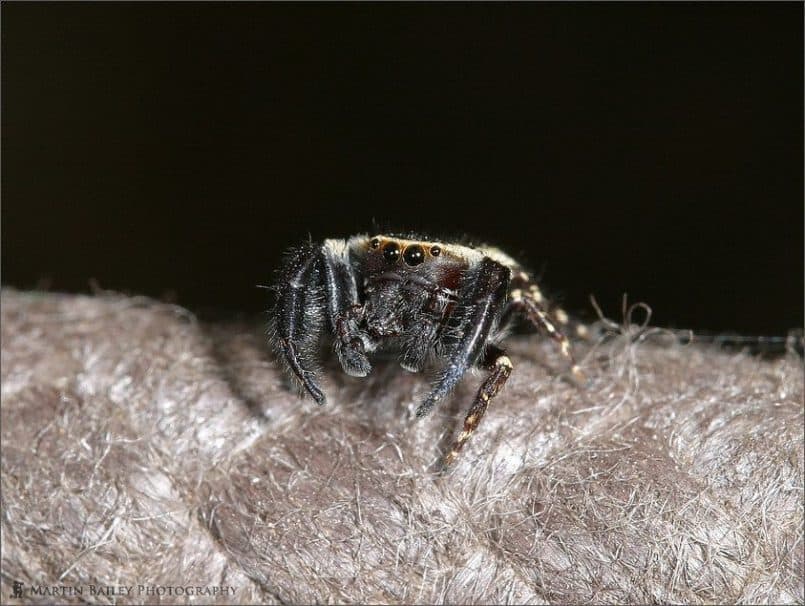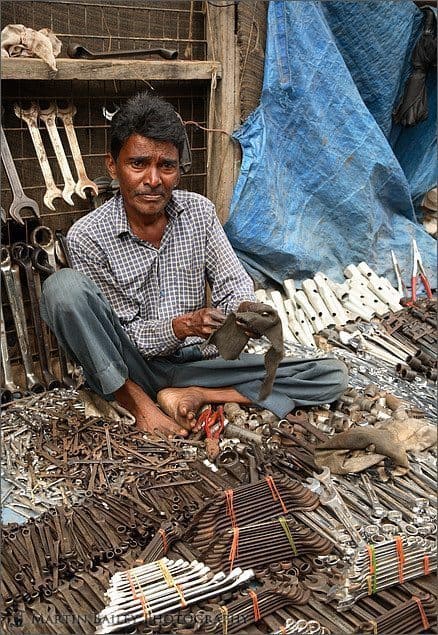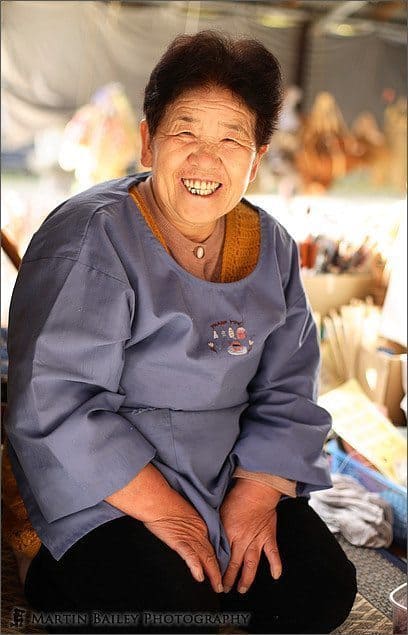Welcome to the episode 34. Today I’m going to talk about eyes in images. It’s been said that the eyes are the windows to the soul. And when shooting subjects with eyes, ensuring they are sharp is the key to good images. When we look at photos with eyes in them, our own eyes automatically search them out, and quickly. Let’s take a look at a number of real world examples to reinforce these statements.
Firstly, I’ve not mentioned how to view the images I’ll talk about for a few weeks, so here goes for new listeners. If you are at a computer the best way to be listening to this Podcast is by clicking the orange Stream Podcast button next to the episode on the Podcasts page at martinbaileyphotography.com. That way the image thumbnails in the streaming audio player will change as I talk about them and you can just click the thumbnail to view the image full size. If you don’t want to use the streaming audio option, you can click the thumbnail also provided next to the episode details. If you are listening in iTunes, you can click through the thumbnails as I talk about them, then click the thumbnail to view it full size. If you are listening on an iPod, you’ll only see the first image, you can’t see the images properly on a screen that size anyway, so I suggest you check out the Web site later to see what I was talking about, preferably listening to the episode again. Finally, I’ll mention a number each time we move to a new image, and you can enter that number into the field on the top page or the top of the Podcast page on my Web site, then click the orange button or hit enter, and you’ll jump to the image.
Firstly, let’s take a look at image 350. Those of you that are familiar with this creature will know immediately, but this is a close up of an alligators eye. I shot this from a converted school bus with no windows on a tourist safari in the Everglades National Park in Florida. I always thought that alligators usually just shuffled along with their bellies close to the ground and legs out to the sides to move, and this is true when they aren’t in a hurry, but I was amazed to see with my own eyes that this guy actually raised his bulk up on all fours and ran towards the bus, much as a large dog would. If I recall correctly it was straight after this show of strength that I shot this. The alligator stopped close to the side of the bus so I could get the shot that I’d wanted the most when I planned this trip.
As you might recall if you listened to episode 1 of this Podcast, I have a thing about animal’s eyes. I don’t know what they are thinking when they regard us as they do, but they are thinking something, and you can get just an inkling of that when you look into their eyes. If you are lucky enough to get a shot of them close up like this, you can inspect that further in the safety of your own home later. Of course, we humans tend to personify our subjects and imagine what they might be thinking from our own perspectives and with our own values and knowledge of the world. This is of course rarely going to be the case, but I still enjoy thinking of what they might be thinking. This guy to me is thinking, “hmm… well, I just charged them and showed them my worst, and they’re all just sitting their still. Why haven’t they ran away screaming. And what’s that guy doing pointing that big shiny white tube at me clicking away like a nutter?”.
I think we tend to personify animals not just because of their eyes, but because of their perceived expressions. This alligator for example might be smirking. You can see the line of it’s mouth curving along the side of it’s face in a wave shape, looking as though he’s smirking. Probably thinking again, “oh well, I’ll have to try and scare the next bus load of tourists a little better later”.
So, something else that we should pay attention to is how we tend to search out eyes in an image. This particular photo has lots of shiny areas and highlights, so it takes some people a little longer to find the eyes, but I’m sure if you’ve just looked at this image on your computer, it didn’t take many seconds before you got to the eye and started to inspect it. You probably then looked around the detail of the eyelids, then once you got your orientation with regards to which eye you were looking at, you started searching for the other eye. You’ll have found the eyelid and maybe were disappointed that you could not see the other eye. This was intentional. You will then start to inspect the rest of the detail in this image, the scales and the bumps and the overall glossy feel.
I shot this at 400mm with my 100-400mm lens, at F5.6 for 1/250 of a second. There was plenty of available light so the ISO was set to 100. I exposure compensated to the tune of -1/3 to keep the black dark, but it was not necessary to go any further as the bright shiny areas of this subject balance out the exposure. The widest aperture for this focal length, F5.6 also helped to start to blur the parts of the alligator’s head further back from the eyes, which helps to draw us back to the eyes a little.
Let’s move on to another shot, number 566. This beautiful bird of prey was sitting on a falconer’s glove about five feet in front of me. This was right at the closest focusing limit of my 100-400mm lens, and I shot it at 400mm, at 1/1250 of a second. I had my ISO set to 200, but I must admit that I was so exited at having this wonder specimen in front of me, I wasn’t too worried about dropping the ISO to 100 which I could have without problems. I’d been at ISO 200 more to capture these guys in flight. This particular bird is actually a TV Star here in Japan. If you live in Japan, keep your eyes open for the Shiranami shouchuu, or white liquor commercial. The hawk you see flying around on once close-up is this beautiful animal.
You can probably see why he was chosen. Beautiful markings and that sparkling yellow eye just draws you in. This brings me to something else that I mentioned in the intro. When there are eyes in the frame, unless you are trying something particular, you should always make sure that you focus on them and get them as sharp as possible. As I’ve said, we tend to search out the eyes. This is instinctual for us and many other animals to look out for eyes, as they tell us where the animal in our sight is looking. If they are looking at us, they may well be about to attack us, and this is why being stared at makes us uncomfortable. Most species of Monkeys I believe consciously avoid eye contact because of the threatening connotations. Although some human cultures use eye contact to gauge trust, others are uncomfortable with excessive eye contact.
Anyway, getting back to the hawk, I was lucky to have a lawn in the background here, and as lawns in Japan go a golden yellowy-brown in winter, the tones are very similar to that of the hawk itself, and the aperture, that was set to F5.6 threw it totally out of focus to allow us to concentrate on the subject and that big yellow eye. Remember keeping them sharp should be paramount in your mind when shooting, whether your subject is a reptile, bird, mammal, insect, human or whatever. If the eyes are not sharp they look dead, and our images will die too.
So, we’ve just looked at the first two, a reptile and a bird example. Let’s take a look at an insect example with shot number 459. Now, technically, this is not a great shot. I’d not long had my 100mm macro lens that I used to shoot this, and I’d only just got my Macro Twin Lite MT-24EX and was very much still experimenting with it. One thing I was bearing in mind is the very shallow depth-of-field in macro shots, and so had chosen an aperture of F10 and exposure time of 100, to match the focal length. That’s probably enough with the flash, but I was hand-holding for this shot, and would now almost certainly have chosen 1/200 of a second or 1/250. There was no exposure compensation as I was in manual mode, allowing the camera to set the correct exposure by adjusting the intensity of the flash. If I’d shot this now, I would have almost certainly tried a shot with my 550EX flash unit triggered wirelessly from the Twin Lite to illuminate the background. I kind of like the sinister dark background in this shot, so I’m not sure which I’d have used, but I regret not thinking to at least try this at the time, had the spider hung around long enough. Another thing when working at this distance, especially when hand holding, is it’s difficult to focus accurately, but the F10 aperture allowed me to get most of those hairy front legs and back to the eyes in focus. In this shot you can see four of this spider’s eyes, but Jumping spiders, which this is, actually have eight eyes. Two others are on the side and the last two are on the back of its head. The only other being I know that has eyes in the back of its head is my Mum.
Next up, is the image that I introduced way back in September 2005, in my very first Podcast, number 595. This is one of my favourite images, I titled The Pink Flamingo’s Stare. To briefly recap I shot this at 400mm with an aperture of F5.6 for 1/800 of a second, ISO 200. Minus 1/3 exposure compensation helped to saturate that shocking pink, and the low angle of the sun at this time of the day helped to make the eye stand out a little more by giving us that bit of shadow across the eye. I won’t dwell on this shot, as I’ve spoken about it at length before, but I do just want to say that I like this image because of that pensive look in the flamingo’s eye. Again, it appears to be regarding me and it is easy to imagine things that might be going through its mind as this weirdo in a geeky vest waves a white tube at it. And of course, the shallow depth-of-field helps to keep our focus on the eye.
Once again think of the path your eye just took around this image as you first looked at it on your computer screen. For this shot, there is no ambiguity. There’s little to draw your attention to anything in the image other than going straight to that eye, which I’m sure is what you looked at first, without hesitation. You probably then started looking for other lines in the image to walk your eyes along, and may well have found the pinkish-white flesh along the front of the flamingo’s face and then moved across the feather’s in the foreground to the sharpest, darker feathers in the front left of the frame. You may have gone the other way around, jumping back straight to the front left, then moving around back to the pinkish-flesh then back up to the eye, and you may also have explored the blurred line across the top of the flamingo’s head too, but I’ll bet you one thing, whatever you looked at after initially looking at the eye, you will have come back to the eye. Eyes get more attention than anything else.So, we’ve looked at a number of nature shots, let’s now look briefly at some human portraits. Firstly, let’s take a look at shot number 723. This is one of the shots I spoke about in episode 9, in which I mentioned many of my attempts at portraiture during a brief trip to India. As you know, portraiture is not a strong area for me, though I do try on occasion. This particular image of a man polishing the spanners he’s peddling, is to me one of the shots that I can look back on from this trip and see, not just from his surroundings, but from his yellow tired looking eyes that this guy has a tough life. When I knelt down in front of him, and gestured that I want to take a photo and asked if it was OK, he gave me one of those sideways shakes of the head, which although looks more like shaking the head in objection, actually signifies consent in India. I focused on the eyes, then recomposed to get the whole scene in focus, snapped a frame or two, then repeated the process a couple more times. I had focused on the eyes instinctively, but as you can see from the shot, the F10 aperture had meant that most of the shot was in focus. This is something else that I regret in hind-sight. I could have opened the aperture to F5.6 or F4 and you’d have still been able to make out enough of the surroundings to appreciate this mans environment. I guess I have to slate this one down to experience too and try a few different approaches next time. When I’d done, I lowered my head in appreciation and said thank you, and I got another one of those sideways head-shakes. The man’s expression didn’t change at all. I felt humbled with all my expensive camera equipment while this man struggles to make a living.
I have to admit though, there’s one thing that bothers me about what I’ve just said. That is that I may be reading more into this man’s plight than is actually true. I doubt that he is a wealthy man, but he may well have a pretty normal living standard in this town. He definitely either has enough money to buy a hell of a lot of spanners to peddle, or has a job working for someone that has a similar amount of money. Why do I read so much into this guy’s plight? He looks tired and/or troubled, and that’s how I’m going to think of him, but I’m getting most of this from the eyes and the expression on his face around them.
Let’s look at another portrait from this trip, taken a short while after the last, which is image number 728. This time I’d found two boys, well actually they’d kind of found me. They were all for me photographing them and started laughing and jumping around as I approached, a foreigner with a camera. I was trying to get a moment when both boys eyes were in view, but the boy to the left was intend on showing off his paper toy, that he expanded and contracted continuously. The result is that I got a wonderful smile from the boy to the right and just one eye of the boy to the left. The single eye actually adds a little enigmatic charm I think, so I’m happy with the result. We wonder what the rest of the boy’s face looks like, building it up in our imagination from what we can see of his cheek and part of his brow. We can also see that he is smiling, just from the shape being made in his face around the eye. I’d say that you, like me, are exploring the partially covered face though, only after taking at least a long glance at the wonderfully cute face of the boy to the right that we can see more easily and entirely.
The shooting details for this shot briefly are F4 for 1/80 of a second. Focal length is 92mm and the ISO was set to 200.
The last image today, number 758, was shot in a village in northern Japan called Oouchijuku, as I was walking around family stalls on the front of the houses. I asked if I could photograph this lady, and she said “who me? You want to photograph this old lady?” with a momentary show of embarrassment, then smiled broadly for the camera. I like this shot because of the connection I made with the subject. I also wanted to note that although we can’t really see this lady’s eyes, all but some dark spots, they still drag us into the image searching for them. I’d say the large smile grabs us equally at first if not more than the eyes on this occasion, but then we are dragged in further, looking for the eyes. We find them due to the expression with the eyes scrunched up eyes we get reinforcement of the genuineness of the smile.
I added 1/3 exposure compensation as the light background would have thrown this lady into darkness, but one thing I have until now always forgotten to mention is that I tend to use center weighted metering most of the time. I never use evaluative metering, so all the time when I quote how much I’m compensating, you really need to bear in mind that I’m getting my reading from more towards the center of the frame, not an average of the whole frame. Another thing with this shot is that I was using my 50mm F1.4 lens, shooting at F2. That helped to throw the bright, cluttered background out of focus enough to stop it becoming over distracting. ISO was 100 and the shutter speed 1/200 of a second.
So, there we have 7 images which of all the images on my Web site I decided to single out to talk about with regards to eyes. Eyes are a part of many, many images, and I really just want to say, get them sharp, and keep your subjects and image alive. You all know that portraiture is not one of my strong areas by far, but I chose to include a few examples anyway, because human eyes are more expressive than most animals, even though we can personify animals quite easily and often do.
OK, so that’s almost it for this week. Once again, I’m sorry this episode was late. Also, remember there are just a few days left until we stop taking entries for the Contrasting Colours Assignment. Just about wherever you are in the world, you will have until midnight on April 30th, but then I’ll lock the forum and voting will start. There’ll be a small black “Vote” button above the photo when viewed full size, and you will be able to change your vote after you’ve voted until the end of Sunday the 14th of May when voting closes. I’ll then announce the winner and enable comments and rating in the Assignment forum on the 15th.
Finally, if you haven’t already completed the Martin Bailey Photography Podcast listener’s survey and you can spare 5 minutes, please locate the link to the survey in the small Podcast section on the top page or linked with a larger graphic on the Podcasts page and complete it for me. I’ve also posted an announcement in the forum about this, with a link, so I’ll put a link to that post in the show notes. Completing the survey will enable me to learn more about you and hopefully help me to find a sponsor for this Podcast at some point.
Anyway, once again good luck with the Assignment if you’re planning on entering, but whatever you’re doing this week I hope you have a great time doing it. Bye bye.
Show Notes
Music from Music Alley: http://www.musicalley.com/
Subscribe in iTunes for Enhanced Podcasts delivered automatically to your computer.
Download this Podcast in MP3 format (Audio Only).
Download this Podcast in Enhanced Podcast M4A format. This requires Apple iTunes or Quicktime to view/listen.

![The Pink Flamingo’s Stare [C] The Pink Flamingo's Stare [C]](https://martinbaileyphotography.com/wp-content/uploads/2006/04/Flamingo_7021.jpg)



![The Pink Flamingo's Stare [C]](https://martinbaileyphotography.com/wp-content/uploads/2006/04/Flamingo_7021-805x537.jpg)




0 Comments